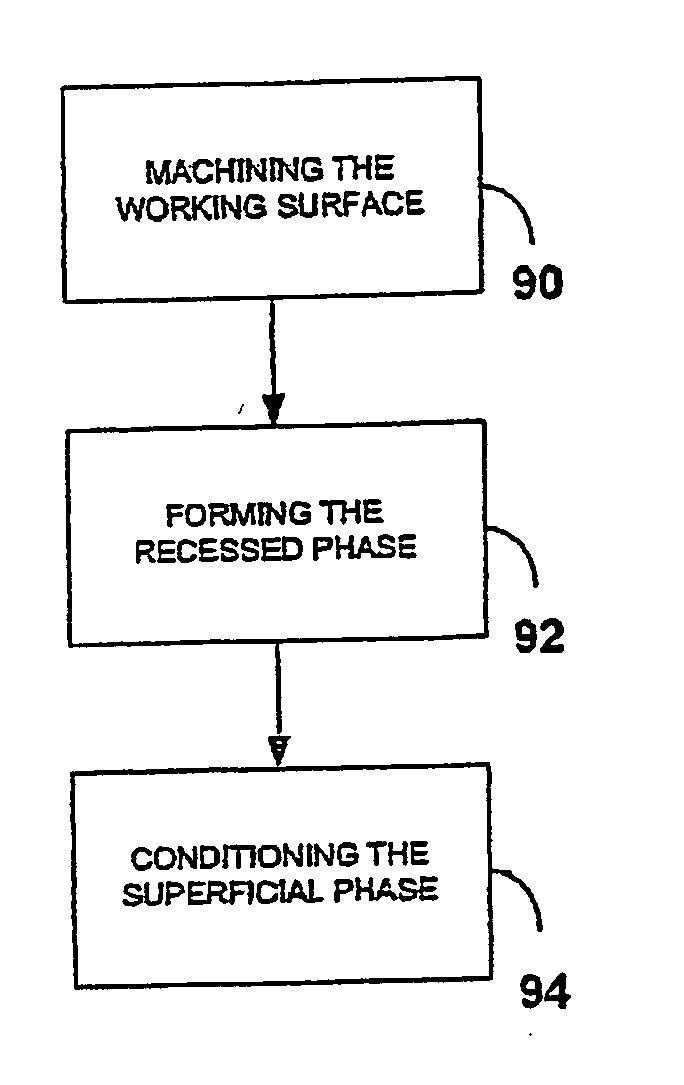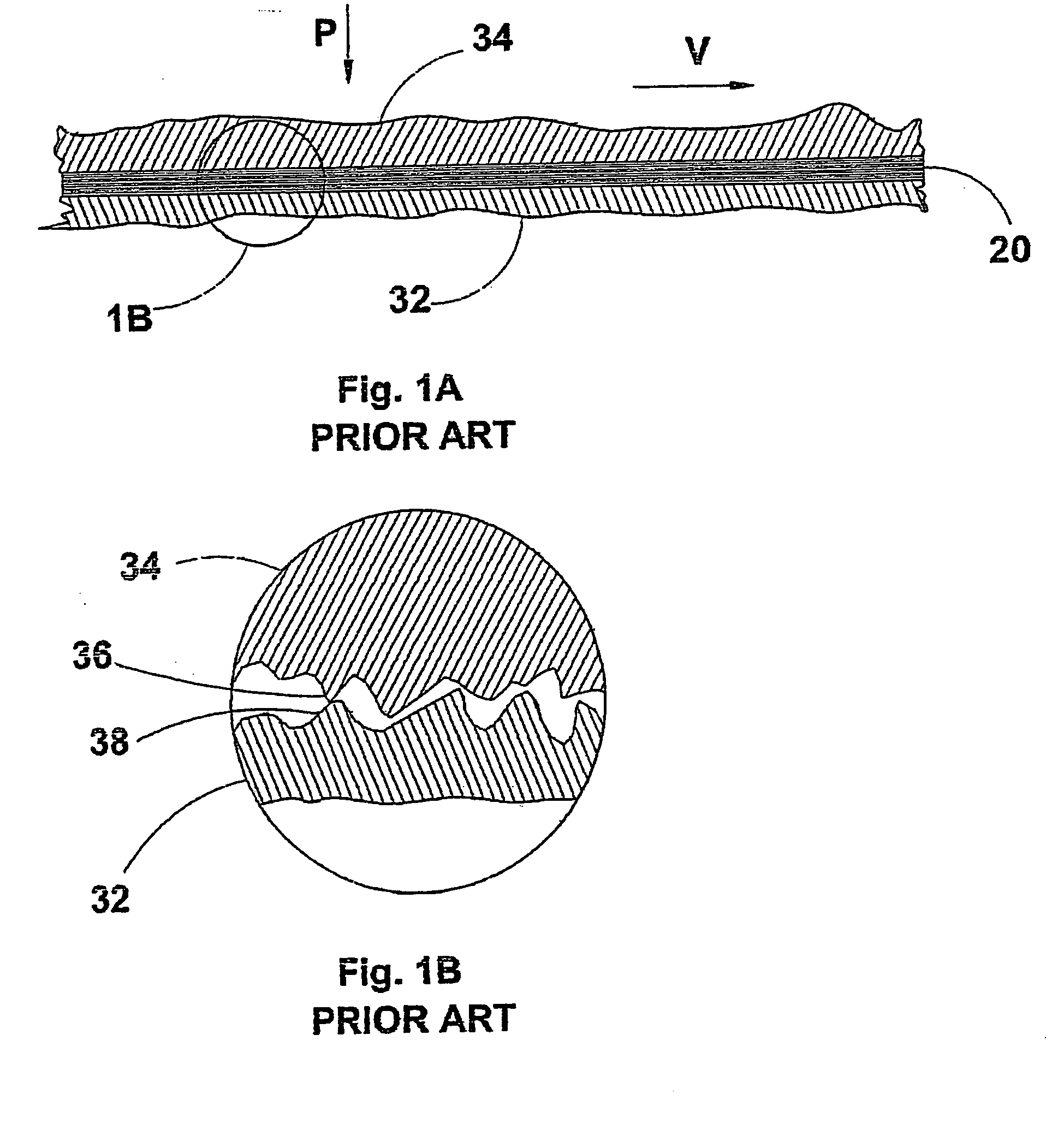Incorporation of particulate additives into metal working surfaces
- Summary
- Abstract
- Description
- Claims
- Application Information
AI Technical Summary
Benefits of technology
Problems solved by technology
Method used
Image
Examples
example 1
[0181] The experimental set-up is described schematically in FIG. 18, to which reference is now made. An interchangeable set of carbon steel discs of 30 mm diameter, such as disc 186, rotatable around an axle, is made to rotate against a flat counter-plate 192 for measuring wear. The discs are made of carbon steel grade 1045, having an HRC of 27-30. Electrical motor or gear 190 supplies the torque for the rotation. Counter-plate 192 is made of a copper alloy (UNS C93700 (HRC=22-24)), ground to an average roughness (Ra) of 0.4 micrometers. Counter-plate 192 has a support 194, which has an adjustable height for controlling the force applied on disc 186.
[0182] The control discs have a conventional grinding finish (Ra=0.4 micrometers), whereas the test discs undergo further treatment by micro-grooving face 196 of the disc, and then by lapping, in accordance with the present invention. During the experiments, a permanent load of a 100 N is applied to the disc in the direction of the cou...
example 2
[0187] A roller on block tribo-tester was used to evaluate the tribological properties of rollers processed according to the present invention, in a “one drop test”. The test rig is described-schematically in FIG. 19. A rotating roller 2 is brought into contact with a stationary block 3 under a given load P while a very small amount of lubricant (one drop) is applied to the contact. A force transducer 4 is used to measure the friction force F and a proximity probe 9 measures the variation in the gap, thus providing the total wear of roller 2 and block 3. Both friction and wear are continuously monitored and recorded as functions of time. The test is stopped at the occurrence of any one of the following three events: (a) the friction coefficient=F / P reaches a value of 0.3; (b) seizure starts between the roller and the block (characterized by a sudden, sharp increase in friction and corresponding increase in noise level), or (c) the friction reaches a maximum value and starts decreasi...
example 3
[0192] A roller on block tribo-tester was used to evaluate the tribological properties of rollers in a “one drop test”. Sliding distance tests were performed on each of four hardened-steel roller specimens, using a hardened-steel block as the counter-surface.
[0193] Roller specimen I was prepared using a conventional lapping method;
[0194] roller specimen II was prepared using a lapping method of the present invention;
[0195] roller specimen III was prepared by grooving followed by the conventional lapping method used in preparing roller specimen I, and
[0196] roller specimen IV was prepared by grooving followed by the inventive lapping method used in preparing roller specimen II.
[0197] The results of the sliding tests are presented in Table 4. Roller specimen II, prepared using a lapping method of the present invention, achieved a sliding distance of 1373 meters, nearly double that of reference roller specimen I, which was prepared using a conventional lapping method. Surprisingly...
PUM
| Property | Measurement | Unit |
|---|---|---|
| Fraction | aaaaa | aaaaa |
| Fraction | aaaaa | aaaaa |
| Fraction | aaaaa | aaaaa |
Abstract
Description
Claims
Application Information
 Login to View More
Login to View More - R&D
- Intellectual Property
- Life Sciences
- Materials
- Tech Scout
- Unparalleled Data Quality
- Higher Quality Content
- 60% Fewer Hallucinations
Browse by: Latest US Patents, China's latest patents, Technical Efficacy Thesaurus, Application Domain, Technology Topic, Popular Technical Reports.
© 2025 PatSnap. All rights reserved.Legal|Privacy policy|Modern Slavery Act Transparency Statement|Sitemap|About US| Contact US: help@patsnap.com



